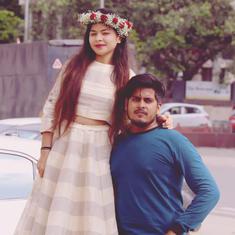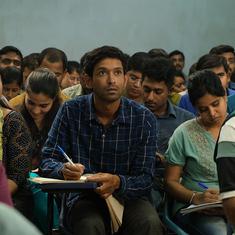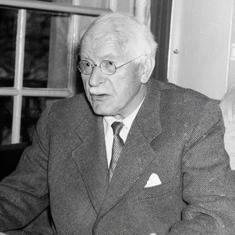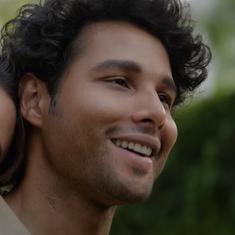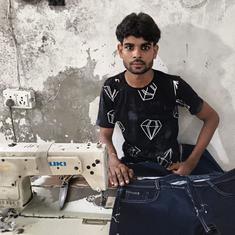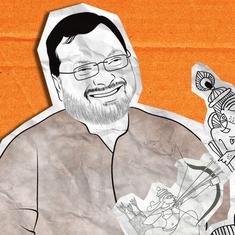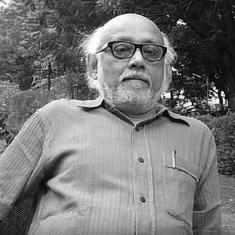In a North Indian city like any other unfolds a romance like few others. Neelesh and Viddhi have fallen in love. The knowledge of who they are, what they represent and what they must overcome to be together is not on the margins of Dhadak 2 but squarely in the foreground.
Shazia’s Iqbal’s bold, powerful and often incendiary adaptation of Mari Selvaraj’s Pariyerum Perumal (2018) brings into mainstream Hindi cinema the radical Dalit consciousness that has transformed the Tamil film industry over the past few years.
Selvaraj and Pa Ranjith are among the filmmakers behind proud assertions of Dalit identity and pathbreaking exposes of the injustice hardcoded into the caste system.
While Dhadak 2 stays largely faithful to the narrative beats of Pariyerum Perumal, Iqbal and co-writer Rahul Badwelkar make a few important changes in the Hindi version. Dhadak 2 lays bare conversations about caste that are largely absent from the average Bollywood romance.
When Viddhi (Triptii Dimri) first sees Neelesh (Siddhant Chaturvedi), he is playing drums alongside members of his Bhim Band at a function at her house. The chasm between them is not only economic. She’s upper caste, while he is Dalit – a truth reinforced for Neelesh when he joins the law college where Viddhi is also enrolled.
Neelesh’s nasty hazing by other students and a teacher is not generic. As a poor pupil who has been admitted on a reserved seat, an only son whose mother (Anubha Fatehpuria) has high hopes from him and whose father (Vipin Sharma) is largely absent, Neelesh must justify his presence. Vidhi is always by Neelesh’s side, offering vital English lessons, companionship and comfort.
Among Neelesh’s tormentors is Viddhi’s cousin Ronnie (Saad Bilgrami). Contract killer Shankar (Saurabh Sachdeva) is lurking on the prowl, waiting to scalp young lovers who stray beyond well-defined caste boundaries.
Despite his tribulations, Neelesh stays away from Shekhar (Priyank Tiwari), a fiery student activist modelled on Rohith Vemula. Shekhar reminds Neelesh that as a Dalit, he was immersed in politics from the day he was born.

That caste is lived, rather than an abstraction, is simply and yet memorably brought out in an exchange between Viddhi and Neelesh. She has some idea, if not quite the whole picture, of the challenges faced by Neelesh. I thought that casteism was restricted to villages, she says. Only those who have never suffered from the inequities of caste can afford to say so, he says.
There is no room for euphemism or politesse in a film that looks at Neelesh’s travails with honesty, empathy and rage. In terms of its effect, especially in the early portions, Dhadak 2 is the equivalent of a minor earthquake.
There has not been a mainstream movie like this in recent times, weaving into its caste-crossed romance revelations about Dalit identity, debates about reservations in colleges and the importance of legal protections against caste atrocities.
Among the most welcome rewrites to Pariyerum Perumal is Viddhi’s arc. She is not like the twittering, naive heroine in the Tamil movie. Viddhi is more like Rinku Rajguru’s Archana from Nagraj Manjule’s searing Sairat (2016). Viddhi is in charge of her situation, fighting shoulder to shoulder with Neelesh.
Viddhi is even given to speechifying that borders on virtue signalling – among the film’s less convincing moments.
The Hindi adaptation would have done well to dispense with the overreach of some of its source material. While Dhadak 2 starkly reveals the manner in which casteism undermines the body, intellect and soul, the 146-minute movie piles on the misery for Neelesh, particularly in the heavy-going sections leading up to the climax.
The constant agony he faces somewhat dilutes the impact of Neelesh’s horrific humiliation by Viddhi’s father (Harish Khanna) and his family.
Yet, Dhadak 2’s achievements eclipse its flaws. Unlike the first Dhadak (2018), an underwhelming adaptation of Sairat, the new movie has a fuller understanding of caste identity and its meaning for a young man striving to assert himself against unimaginable odds. The very act of love can be revolutionary when it involves individuals from different backgrounds. Shazia Iqbal has previously directed the acclaimed short film Bebaak (2019) and the most compelling episode in the anthology series Love Storiyaan (2024). Iqbal’s feature debut boasts not just of an immersion into the caste question, but also the larger world of free speech, revolutionary campus politics and inter-faith unions that have come under severe attack of late.
The colour blue, associated with the Ambedkarite movement, acts as both lodestar and catalyst. Blue is right there in Neelesh’s name, just as it’s slathered over the walls of the humble houses in his slum or tucked into the muted colour palette adopted by cinematographer Sylvester Fonseca.
Iqbal’s direction is also evident in the terrific performances by the leads, who convey both the throb and agony of taboo love. Triptii Dimri’s talent for mining heartfelt feeling, already evident in Laila Majnu (2018) and Bulbbul (2020), is at the fore in Dhadak 2.
Siddhant Chaturvedi is excellent in bringing out Neelesh’s initial diffidence, his ardour for Viddhi and the sheer physical effort involved in dusting off the stigma associated with his birth. The noteworthy supporting turns include Vipin Sharma and Anubha Fatehpuria as Neelesh’s parents and Zakir Hussain as the college principal Ansari, whose own journey mirrors Neelesh’s in uncanny ways.
Also read:
‘Dhadak 2’ director Shazia Iqbal: ‘Caste is everywhere, not just in rural India’

